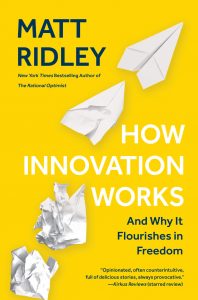We love simple truths. It’s easier to tell a story where there’s a lead character as a superhero that saves the day. A more mundane reality does not sell as well nor inspire as much. Yet, that’s what happens with human progress.
It’s team effort building and piling on the top of all the previous achievements. It does not need any single individual but its probabilistic nature brings comfort that progress will eventually happen, maybe neither as fast nor exactly the same way but nevertheless.
Innovation is “the child of freedom and a parent of prosperity”. It flourishes where ideas can have sex and people are free to trade and experiment. It needs tolerance for failure and acceptance for trials and errors.
Often we are our worst enemies. It’s easier to favour incumbents and stick to the existing status quo than face the unfamiliar and unknown. Our societies have been shifting towards risk aversion.
This results in slower innovation and stagnation. The tools for hostile innovation environment are many and they are often wrapped in appealing disguises. Patents and IP-rights are claimed to protect and boost creativity. Yet, they are restricting innovation and a lack of protection does not prevent innovations from happening. People are inventive and find new ways to become competitive and prosperous regardless.
Regulatory capture and consumer protectionism are used to increase barriers and favour large players. Large is easier and more acceptable in societal level but big corporations are not innovative compared to smaller and more agile newcomers.
Often it takes an outsider to disrupt the field. We are wasting resources in unnecessary fights against overregulation, bureaucracy and patent trolls. The public and political systems have become the enemy of progress and part of the problem.
Ridley shows with numerous examples the serendipitous nature of innovation and how it happens in many cases more or less by accidents. Some of it is more planned than in other times but by dictums and top-down policies the desired outcomes are not delivered efficiently or in some cases at all.
Whether you want to learn about various innovation stories or understand better the interconnected nature of the innovation system Ridley shines light to the crucial area of our existence. Who wants to go back thirty, twenty or even ten years?
The sacrifices are too big in concrete terms when you realise all the goods and services you have to give up in order to go back in time. The same happens with our future but it’s harder to imagine the goods and services that we deny from ourselves because of innovation hostility.
How radically amazing future are you willing to create with your attitude towards the new and unknown?

